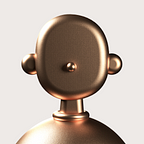ParkMate— A UX Case Study
Ideas to make parking easier and more efficient.
Tl;dr: A one-day hackathon design exercise to help users find convenient parking in and around their location or reserve parking spots for a future date. Have a nice day!
1. The Purpose
Bangalore is a busy city and finding parking can be both stressful and cumbersome. A user has multiple pain points from finding a safe parking spot to dealing with cash transactions. Some of my early questions were:
- Why should one use ParkMate?
- What goals are the users trying to accomplish from this interface? What’s in it for the user?
- Why and how would the business benefit from having an app to help with parking?
- How can parking be more organised in the city?
Enabling Smart Parking
Managing parking is a dominant factor in urban form and perhaps one of the biggest obstacles to a sustainable form of urban development. The aim is to help better plan the urban mobility space by designing, integrating, executing, and maintaining smart parking ecosystem suitable to Bangalore city.
A few pain points:
- 20 minutes wasted in search of a parking spot on average
- Increased road congestion due poorly parked vehicles
- Increased pollution as vehicles spend unnecessary time searching for parking
- Plans being dropped due to unavailability of parking in high density areas
2. The Process
I did some research by speaking to a mixed bunch of people ranging from colleagues to friends (8 men and 3 women, aged 24 to 32) which helped me drive a few design decisions like having the price and distance on the map bubbles (70% of people I interviewed chose convenience over cost.) User stories helped me scope out my designs and user flows help me target specific pain points which I’d want to solve. Sketching out functionality maps helped me connect the dots and figure out how the user can navigate the eco-system.
Since this was a rather tight timeline for me to run an extensive research phase and having done some white-boarding last week, I decided to keep the research phase short.
Habits:
- Is lazy. Doesn’t like waiting for things to happen.
- Is a tech-friendly. Usually on their phone for about 60–70% daily.
- Has a reasonably short attention span and tends to get distracted easily.
Frustrations:
- Is tired of driving around looking for a safe parking spot.
- Hates being stuck in traffic.
Motivations:
- Guaranteed parking spot once you’ve reserved the spot.
- Having the nearest available parking spot.
3. Wireframes
I sketched a few concepts on paper first, since that is a really quick way to ideate. As a designer, this phase is where I eliminate many of the ideas churning in my head. I sketch them out, look at problems they have and I iterate. I keep going until I feel I’ve hit a sweet spot. I usually don’t dwell on the finer details in this phase.
4. Visual Design
Once I notice a consistent pattern emerging from the sketches, I switch to crafting visual designs based off of the wireframes. Here is where I focus on layout, composition, typography, colour and all the other nitty gritty details.
I’ve used a shade of light blue as my primary and green as the accent colour. As colour theory suggests:
Blue symbolises trust, loyalty, wisdom, confidence, intelligence, faith and truth. Deep blue is associated with depth, expertise, and stability; and is recommended when promoting high-tech products.
I thought it was important to have two views to view parking spots — the map view and the list view. The map view is great at visually showcasing the distance of parking spots as well as the price, two of the deciding factors according to my research. The list view on the other hand is good for quick at-a-glance reading especially if the user is in a car.
5. Prototyping
After creating the visual designs, I used Invision to make a rapid prototype to test for myself if the flow functions as designed. While visual designs are useful to understand the look and feel of the product, prototypes are crucial in comprehending how the app functions.
While Invision is great at quickly creating an interactive prototype, it isn’t the best suited for micro interactions and animations. I used Principle to create an animated gif where I could focus on the details of the to create a delightful user experience.
Things like the timing of the bounce, the elasticity of the spring, the precise scaling and the weight on the bounce have been carefully considered during this phase. If well done, this will delight customers while they have their “aha” moment.
6. The Future
Luxe Valet Service
A service that could partner with ParkMate which could deploy a few valets at popular parking zones. So if they users don’t have the time to go park their car, they could call the valet to their location for an extra premium of-course.
HERE Balloons
This is a very innovative and inexpensive concept with balloons at the parking lot which has already proved to be working very well in South Korea. It could tie-in very well with this app.
Thank youI'm Ben, a Product Designer currently based in Singapore. If you like to talk to me more about this project or anything else, you can DM me on Twitter @bengeorge_21
